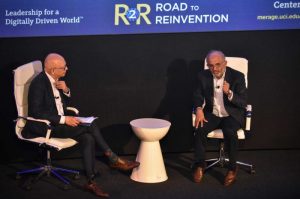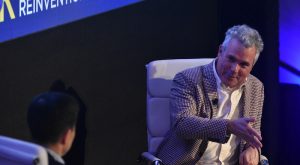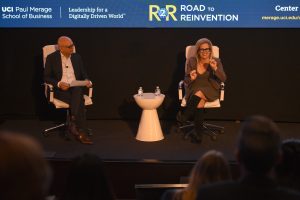Center for Digital Transformation Selects Top Companies for Digital Innovators Award by CDT
Center for Digital Transformation Selects Top Companies for Digital Innovators Award by CDT

The Center for Digital Transformation at the UCI Paul Merage School of Business has named Target Corporation, Aetna/CVS Health and Quad/Graphics, as the first, second and third place winners in its inaugural Digital Innovator Award program.
The three companies were selected because of their prowess in reinventing themselves for the digital world. The selection is based on an analysis of responses to the Center’s annual Digital Transformation Survey, plus other publicly available information.
The assessment takes into account six dimensions that are essential to digital transformation: company-wide strategic vision, alignment of the vision to investments in digital transformation, a culture of innovation, intellectual property assets and knowledge, the digital capabilities of workers, and the actual use of digital technologies.
“Digital transformation is especially challenging for legacy companies — which we define as incorporated before 1990 — because they have to change in fundamental ways that younger, natively digital companies don’t,” said Vijay Gurbaxani, the director of the Center for Digital Transformation. “Our survey examined 150 companies, but among them, these three companies stood out.”
The three winners were honored at a dinner on March 20, 2019 and recognized at this year’s annual Road to Reinvention Conference, a one day conference for executives on leadership in the digital age, in Irvine, CA on March 21, 2019.
The Center for Digital Transformation, a research-based Center of Excellence at UCI’s Paul Merage School of Business, has been built on the belief that digital technologies are transforming the strategy and structure of business enterprises. The Center provides an independent voice and is an influential catalyst for advancing the competitiveness and productivity of businesses in the digital economy.
About The Paul Merage School of Business
The Paul Merage School of Business at UC Irvine offers four dynamic MBA programs – plus PhD, specialty masters and undergraduate business degrees – that prepare business leaders for our digitally driven world. Through our programs, students acquire the exceptional ability to grow their organizations through strategic innovation, analytical decision-making, digital information technology and collaborative execution. While the Merage School is relatively young, it has quickly grown to rank consistently among the top five percent of all business programs worldwide through exceptional student recruitment, world-class faculty, a strong alumni network and close relationships with both individual business executives and global corporations. Additional information is available at merage.uci.edu.






Recent Comments